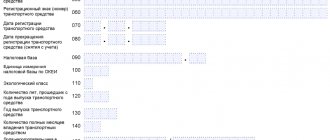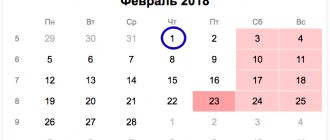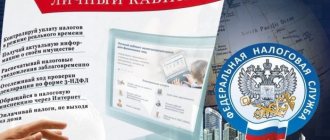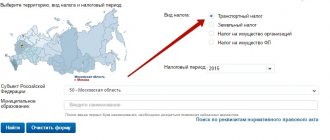Content
- Definition of transport tax
- What do we pay for?
- Based on what is it calculated?
- Rules in force in the regions
- When do we pay?
- How to pay
- Notice: What it contains
- How to pay if the individual entrepreneur is on the simplified tax system
- How to calculate tax
- IP on UTII
- Does the individual entrepreneur submit a declaration?
- Transport tax benefits
- How to pay tax if the vehicle is leased
- How to reduce tax on Plato
- Conclusion
If entrepreneurs use any transport in their work, they must pay tax on it. We will discuss how this tax is paid today.
Deadlines for payment of transport tax
Organizations that are on the Simplified Tax System and use vehicles in their work must pay transport tax throughout the year in advance payments - based on the results of the first quarter, half a year and 9 months. If the advance payment deadline falls on a weekend, the tax must be transferred to the tax office account no later than the next business day.
The final payment of transport tax for an LLC must be made before January 31 of the following reporting year, inclusive. Payment of transport tax for individual entrepreneurs (as an individual) is made until October 1 of the next year.
Definition of transport tax
Transport tax is a tax that is levied on persons who own vehicles that are officially registered.
It is regional. Regional bodies of the Federal Tax Service can change its rate downwards and upwards. However, you cannot change the bet more than 10 times.
Keep in mind that when calculating the tax rate, the legislation applies the rules as to an individual and it does not matter at all that the transport is used to conduct business.
Features and procedure for calculating transport tax
In fact, the amount of tax is calculated according to the same formulas as for other taxpayers. The calculation is based on the regional rate and transport capacity, as well as the duration of car ownership. If it is classified as expensive, then an increasing factor is applied. The tax is calculated for each unit of transport registered as an individual entrepreneur. But if the calculation is carried out in the standard mode, then the payment has its own characteristics. This depends on the chosen taxation scheme within the simplified tax system. So, if a general scheme is used, then TN is included in the costs. In this case, the tax is calculated according to general rules, and payment is made in the same way as by business entities, quarterly during the tax period, with the balance paid at the end of the reporting period. The calculation formula, as already mentioned, is universal:
TN = MD x NS x (KMV / 12), where:
- TN - transport tax;
- MD - engine power;
- NS - tax rate;
- KMV - the number of months of vehicle ownership per calendar year.
If the “income minus expenses” scheme is used, then the transport tax goes to the expense item, which makes it possible to reduce the total amount of all due contributions to the budget. The calculation is as follows: the tax base is calculated, then the amount of the minimum tax is determined (the product between income and 1%). If the tax base is negative, then the minimum is paid, if it is positive, then the amount is payable according to the following calculation:
TN = NB x 15%, where:
- TN - transport tax;
- NB - tax base;
- 15% - bid.
If there have been advance payments, they are deducted from the resulting amount and the balance (if any) is paid. If the car is expensive (from 3.5 million rubles), then an increasing coefficient is applied, which also depends on the year of manufacture of the vehicle, that is, the older the car, the lower the coefficient and, consequently, the amount of the transport tax.
Transport purchased on lease also has taxation specifics. If the relationship is properly formalized in the form of an agreement, then the owner is the lessor. These cars are also registered with the State Traffic Safety Inspectorate and tax is paid on a general basis, but not by the person who uses the transport, but by the lessor. If such transport is transferred and temporarily registered in the name of the lessee, then he will be the tax payer. This is enshrined in Order No. 1001 of the Ministry of Internal Affairs of the Russian Federation dated November 24, 2008 “On the procedure for registering vehicles.”
Rules in force in the regions
Since the tax is regional, there are differences in the amount of tax in different regions of the Russian Federation. Therefore, you need to find out the rate that will be relevant in the region in which you live. To do this, just contact the tax authorities or go to the official website of the Federal Tax Service.
For example, in the Moscow region there is a reduced rate on cars that are small, so individual entrepreneurs most often use them.
There are situations when an individual entrepreneur works in a provincial town, but the transport is registered in a large city. Then payment of the tax will be made according to the rules of the metropolis.
Debts for which income cannot be written off?
The list of income not subject to write-off will be listed in paragraph 72 of Art. 217 Tax Code of the Russian Federation. The specified income will include the citizen’s profit received:
- in the form of remuneration for the performance of labor or other duties, performance of work, provision of services;
- in the form of dividends and interest;
- in the form of material benefit, determined in accordance with Art. 212 Tax Code of the Russian Federation;
- in kind, determined in accordance with Art. 211 of the Tax Code of the Russian Federation, including gifts received by taxpayers from organizations or individual entrepreneurs;
- in the form of winnings and prizes received in competitions, games and other events.
In this case, we are talking about debt resulting from the write-off of citizens' debts by organizations - for example, telecom operators and banks, clarifies the head of the legal department of HEADSConsulting Diana Maklozyan. According to experts, this amount is about 22 billion rubles.
How and when will debts be written off?
Debt write-offs from citizens and individual entrepreneurs will be carried out unilaterally, that is, these persons will not submit any documents or statements to the tax authorities!
The law does not establish the obligation to notify individual entrepreneurs and citizens about the written off debt and its amount. It is assumed that the interested person will have to independently contact the tax authorities to clarify the amount of arrears and the amount of debt written off.
When do we pay?
An individual entrepreneur must submit transport tax once every 12 months. The payment period is from October to November.
If you registered your vehicle on December 31, 2016, you will need to pay in full for the entire month of December.
If you sell your vehicle, you pay in full for the month in which the sale was made.
It happens that entrepreneurs make a serious mistake: equipment is written off from the balance sheet, and tax payments stop. You need to pay until your vehicle is deregistered by the traffic police. Otherwise, you will fall into the category of debtors and will have to communicate with bailiffs.
How to pay
A month before the date when you need to transfer the payment, you will receive a letter with a tax notice. The notice will indicate the amount you must pay. If you notice an error when rechecking the amount, you can contact the Federal Tax Service and report it.
Payment methods may be as follows:
- In cash through the cash desk of a banking organization;
- Through payment terminals;
- Using the service on the official website of the Federal Tax Service;
- Using e-commerce tools.
If you have a current account with a banking organization, you can make a payment from it through the online banking system.
How to pay if the individual entrepreneur is on the simplified tax system
First, let's explain what the simplified tax system is. This is a simplified taxation system.
Thanks to this regime, individual entrepreneurs do not pay the following taxes:
- On property;
- At a profit;
- Personal income tax at the rates specified in the Tax Code.
Advantages of simplification for an entrepreneur:
- No need to do accounting. accounting;
- The tax burden becomes lower;
- Discounts may be used for some payments;
- You can choose a method for calculating the tax base: at a rate of 6 or 15%.
The tax rate ranges from 5-15% depending on the region.
The 6% rate is most often used by those individual entrepreneurs who do not have employees.
When and how to pay?
Art. 363 of the Tax Code of the Russian Federation establishes deadlines for paying car taxes for individuals and organizations. An individual entrepreneur is not a legal entity, but belongs to “physicists”, therefore it is necessary to transfer money to the treasury according to the rules provided for them. This gives the entrepreneur a number of advantages over organizations:
- no need to make advance payments throughout the year (they are provided for legal entities, but are also canceled for them in some regions);
- a single deadline has been established for paying tax regardless of the region - until December 1 of the next year, that is, for 2021, payments must be made before December 1, 2021 (for legal entities, the end dates vary from region to region);
- there is no need to independently calculate the amount of tax; payment is made in accordance with the data from the tax notice in accordance with clause 3 of Art. 363 of the Tax Code of the Russian Federation (legal entities calculate the tax independently);
- there is no need to fill out a transport tax return and submit it to the Federal Tax Service (the status of an individual frees individual entrepreneurs from this paperwork, according to clause 1 of Article 363.1 of the Tax Code of the Russian Federation, a tax return is submitted exclusively by organizations that have the appropriate objects of taxation).
An individual entrepreneur does not need to go to the Federal Tax Service - he does not have to submit a declaration, and he can send money to pay the tax through a bank or online banking. Additionally, there is no need to search for payment details - all information is provided to the payer in the notification. It is enough to present it at the bank or fill out a payment order remotely. The main thing is to do it before December 1 of the year following the reporting period.
How to calculate tax
The tax rate changes every year. This year, the calculation for individual entrepreneurs and legal entities is slightly different. The individual entrepreneur receives a ready-made receipt with the specified amount, they simply pay for it and that’s it.
Legal entities calculate tax using the following formula:
Tax rate * tax base = payment amount.
Example. IP Kozyavkin owns a Chevrolet car. The calculation will look like this: car power - 122 hp, tax rate - 3.5 hp/year, which means we multiply 122 by 3.5 and get 427 rubles.
IP on UTII
Payment of transport tax raises a large number of questions for those individual entrepreneurs who use UTII. For example, should I pay it as an ordinary citizen or as a legal entity?
If we turn to the Tax Code of the Russian Federation, we will see that those individual entrepreneurs who operate within the framework of UTII are not exempt from paying transport tax.
If we talk about the method of calculation, then in relation to individual entrepreneurs the tax should be calculated in the same way as it is calculated for individuals. And it doesn’t matter that transport in this case is an object of entrepreneurial activity.
Do individual entrepreneurs pay transport tax?
According to Art. 357 of the Tax Code of the Russian Federation, whether a person is a transport tax payer or not absolutely does not depend on the type of activity. It is necessary to pay funds to the treasury if you own vehicles that are subject to the collection of this tax. It also explains that an individual entrepreneur (like any other) can become a payer due to the transfer of a car to him for use by proxy. Then the need to pay transport tax passes from the owner to the user.
Payment of transport tax does not apply to all individual entrepreneurs. If he is not the owner of a car or other equipment listed in paragraph 1 of Art. 358 of the Tax Code of the Russian Federation, then there is no need to pay car tax. There are also some types of vehicles that are exempt from this type of tax (clause 2 of Article 358 of the Tax Code of the Russian Federation). These, for example, include:
- river and fishing vessels;
- rowing boats;
- boats equipped with a motor with a power of up to 5 hp. With.;
- equipment used in agricultural work (tractors, combines, milk tankers, etc.).
Additionally, in certain regions, benefits in relation to the payment of transport tax may be established in specific regions (the amount is reduced or individual entrepreneurs are completely exempt from such contribution).
To understand whether he is a transport tax payer or not, an entrepreneur must:
- if you do not own or own equipment, you do not need to pay tax; if you have it, check the list of vehicles from which tax is withheld;
- see if a specific vehicle is on the list of those objects that are not subject to taxation;
- if it turns out that no federal benefits are provided, regional legislation should be studied.
It is noteworthy that individual entrepreneurs pay transport tax as individuals (which, in fact, they are, despite belonging to a business). For payment in a form different from that applied to legal entities, there is another argument - entrepreneurs can use personal transport to conduct business, that is, one that they bought for personal purposes.
Does the individual entrepreneur submit a declaration?
As we have already said, individual entrepreneurs are subject to the tax payment rules that apply to individuals. This means that they do not need to fill out a declaration and submit it; it is enough to make payment upon notification from the tax authorities.
If we talk about the declaration in general terms, then it is a document that consists of a title page and two sections.
We will briefly describe how it should be formatted:
- If a blot or mistake was made when filling out, various correctors cannot be used;
- The numbering of sheets must be continuous and start from the first sheet;
- Stapling sheets with a stapler is unacceptable;
- All letters must be capitalized and printed;
- When filling, you can only use purple, black or blue ink;
- If any indicator is missing, a dash is placed in all relevant fields.
It is much easier to start filling out from the second section, and only then move on to the first. Once the forms are completed, they can be delivered in person, sent by registered mail, or sent using email.
Transport tax benefits
The law says that if a person engaged in business operates as an individual entrepreneur, then in terms of paying transport tax he is equal to ordinary citizens. It turns out that individual entrepreneurs can enjoy the same benefits as citizens of the Russian Federation.
In each subject of the Russian Federation there are citizens who are either fully or partially exempt from paying taxes.
Let's take a closer look at these categories:
- Persons who participated in wars and are their veterans;
- People with different disability groups;
- Those entrepreneurs who deliver their employees to work by transport, which must be taxed.
There are other categories, but each region regulates this issue independently.
To confirm your right to apply benefits, you must provide documentation confirming your right to the tax office, as well as write an application.
General provisions
In accordance with Chapter 28 of the Tax Code of the Russian Federation, the general principles for paying tax are as follows:
- taxpayers are the owners of automobile, water and air vehicles, but there are exceptions (tractors, for example, devices for cars, etc.);
- for a vehicle with an engine, the tax base is determined as the vehicle engine power in horsepower;
- reporting and tax periods are also established by the Tax Code of the Russian Federation, the tax period is a year, that is, tax must be paid annually;
- the frequency of payment and the procedure are established by the constituent entities of the Russian Federation;
- individuals do not fill out the declaration; they receive a notification.
Transport tax in St. Petersburg in 2020-2021 - who has benefits?
How to reduce tax on Plato
If you are an individual entrepreneur and own a heavy-duty vehicle with a carrying capacity of more than 12 tons, it is quite logical that you make payments to the Platon system. This is not a tax, but a fee and it is federal.
In connection with the introduction of this system, the President of the Russian Federation made a proposal to abolish the transport tax for owners of heavy trucks. The tax was not abolished, but a certain benefit began to apply.
Car owners can take advantage of this benefit if they have deposited into the Platon system an amount exceeding or equal to the amount of the calculated transport tax. In this case, they do not pay transport tax at all.
If the amount of the fee paid is less than the amount of tax, then the entrepreneur can reduce the tax by the amount that was paid by him.
You need to contact the Federal Tax Service in your region for detailed information.









